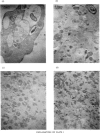Abstract
1. The myxamoebae of the cellular slime mould Dictyostelium discoideum possess several typically lysosomal enzyme activities. 2. These enzymes are present in the cell in association and in a lysosome-like particle. 3. The lysosomes of myxamoebae grown axenically have a different enzymic composition and a different density from those grown on bacteria. 4. During cell differentiation the specific activities of the lysosomal enzymes change. 5. It is suggested that both during growth and differentiation the amounts of lysosomal enzymes present in the cell are regulated.
Full text
PDF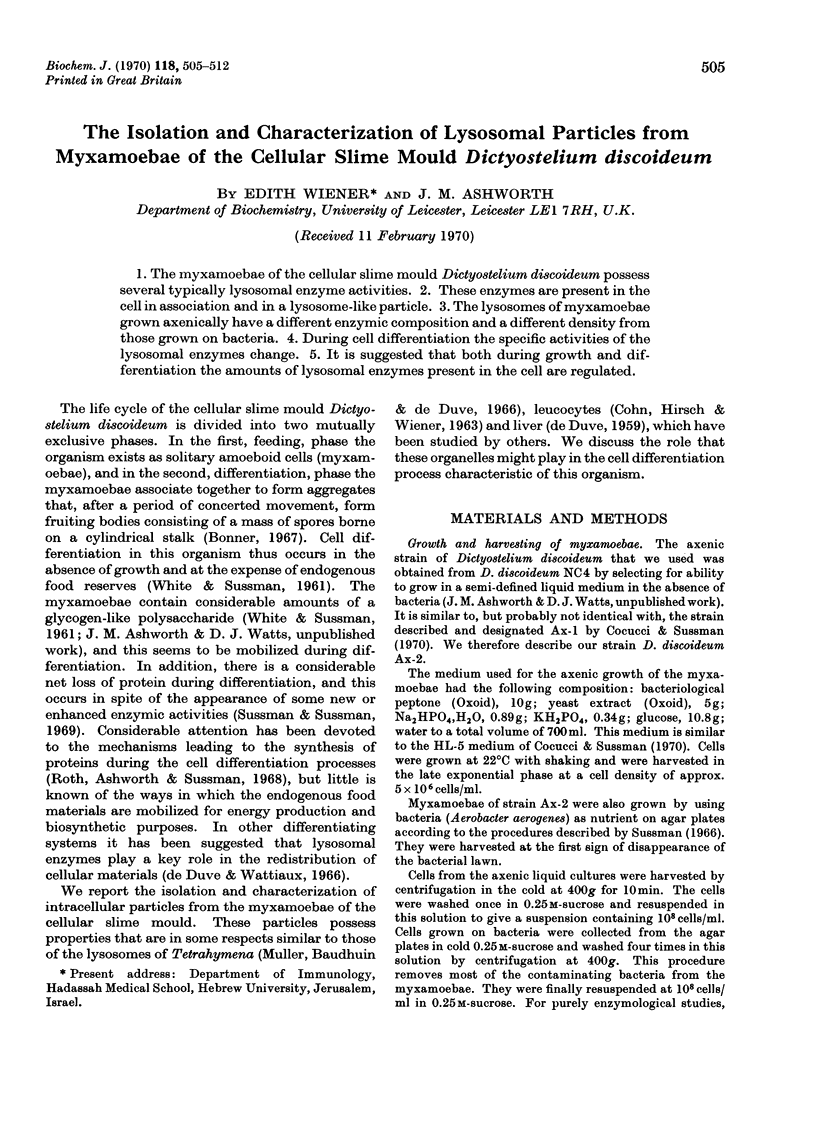
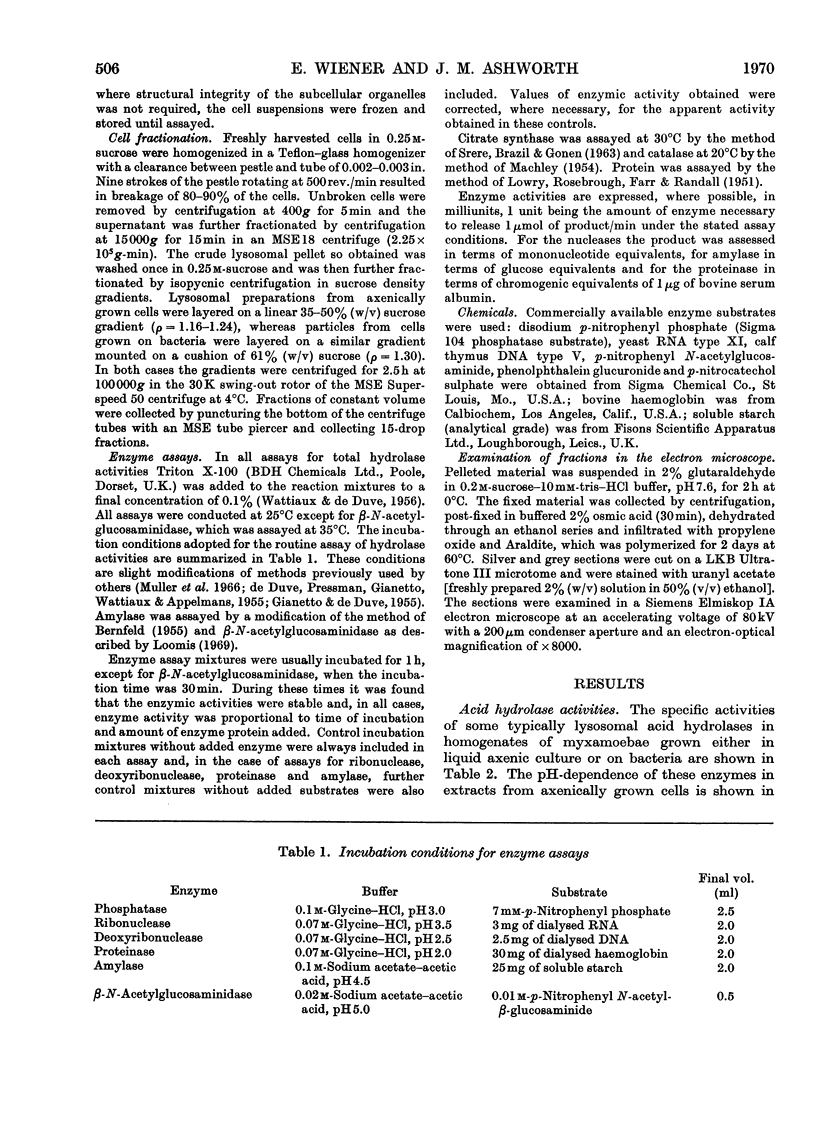
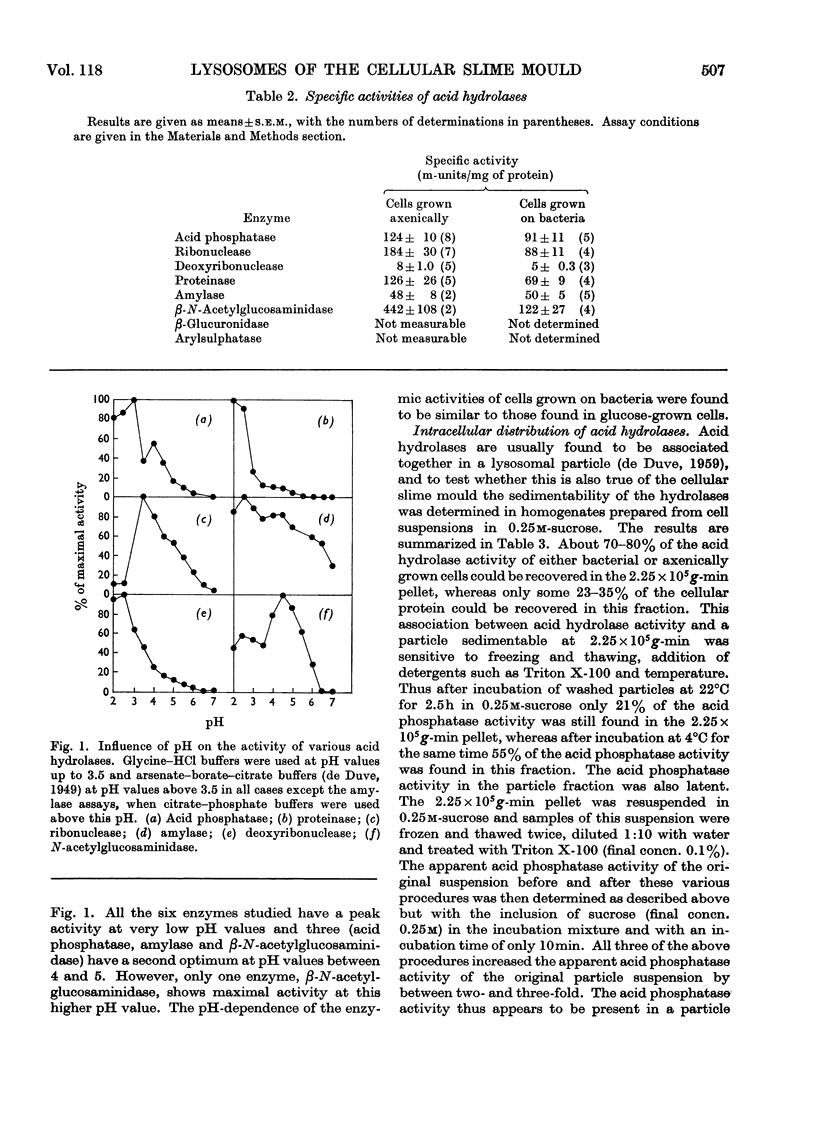
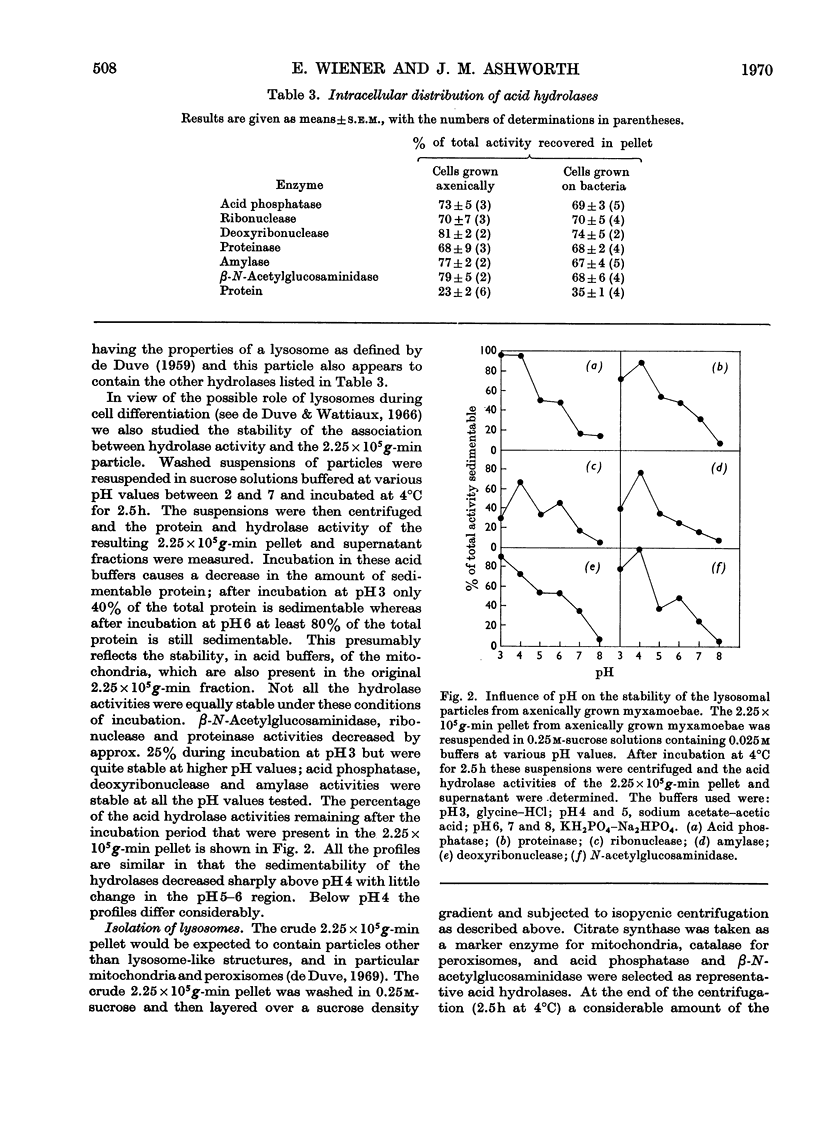
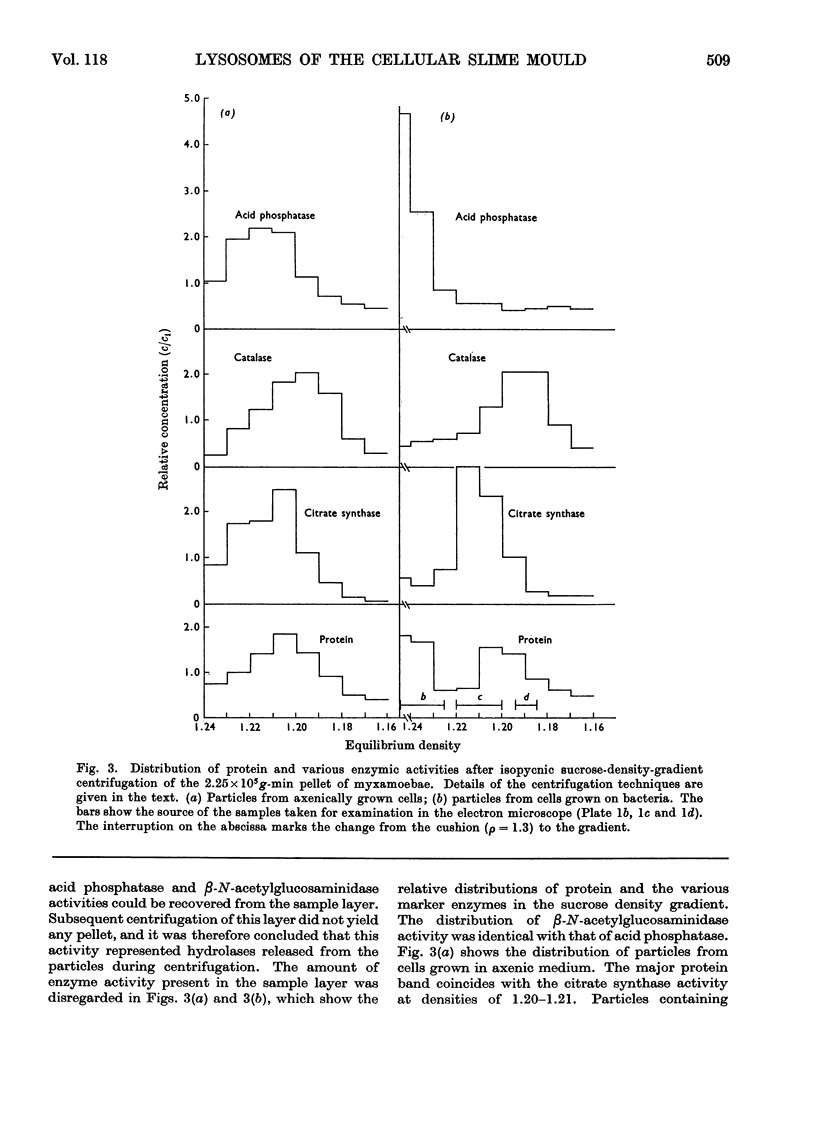

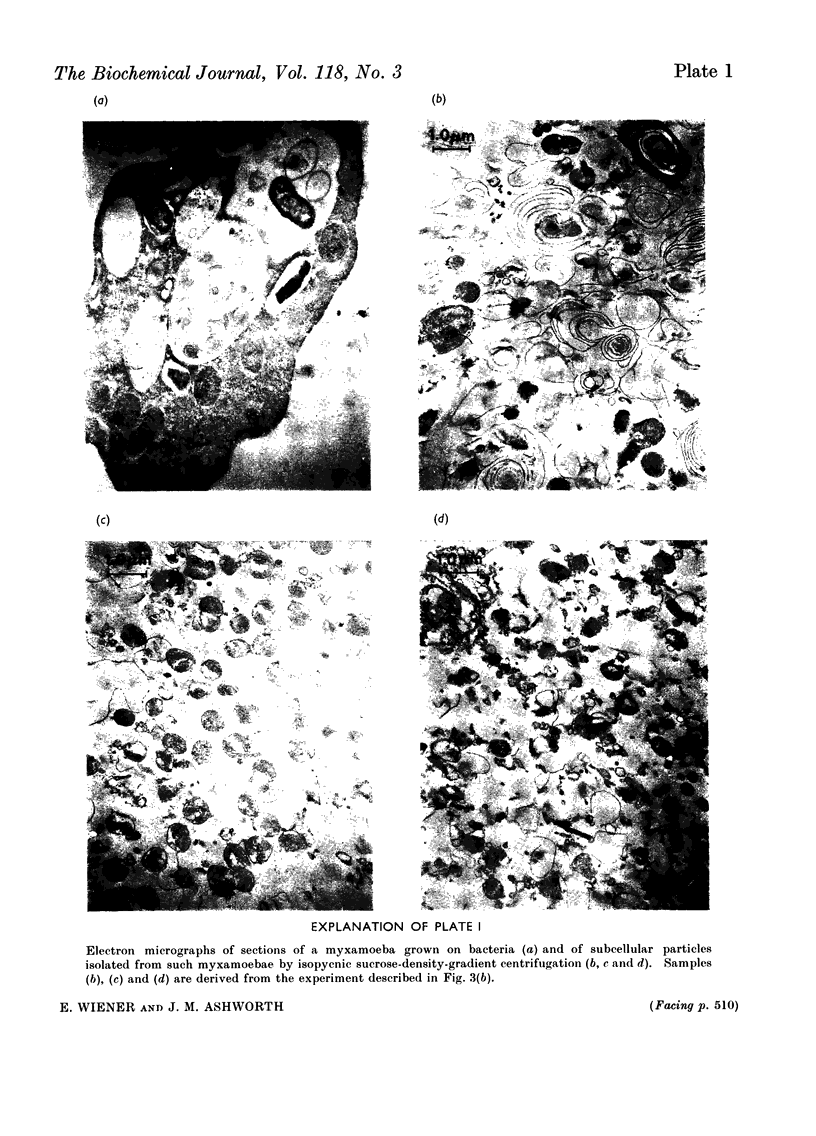
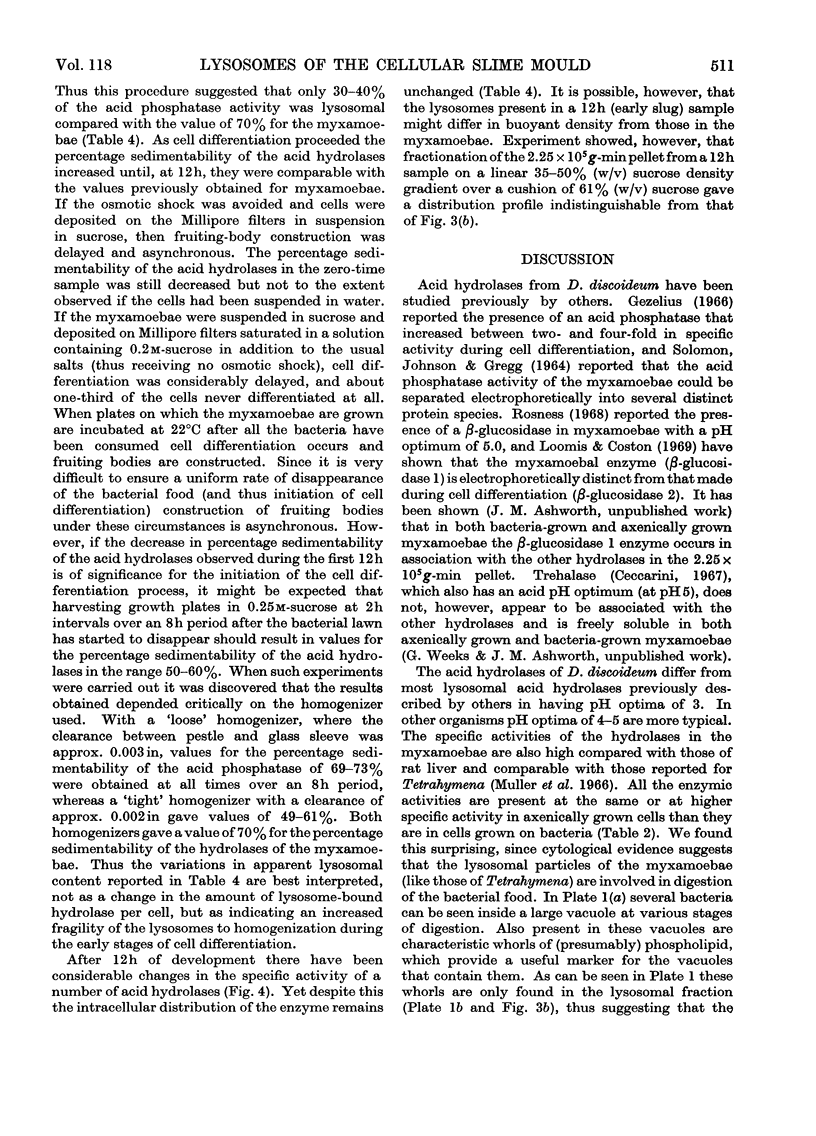
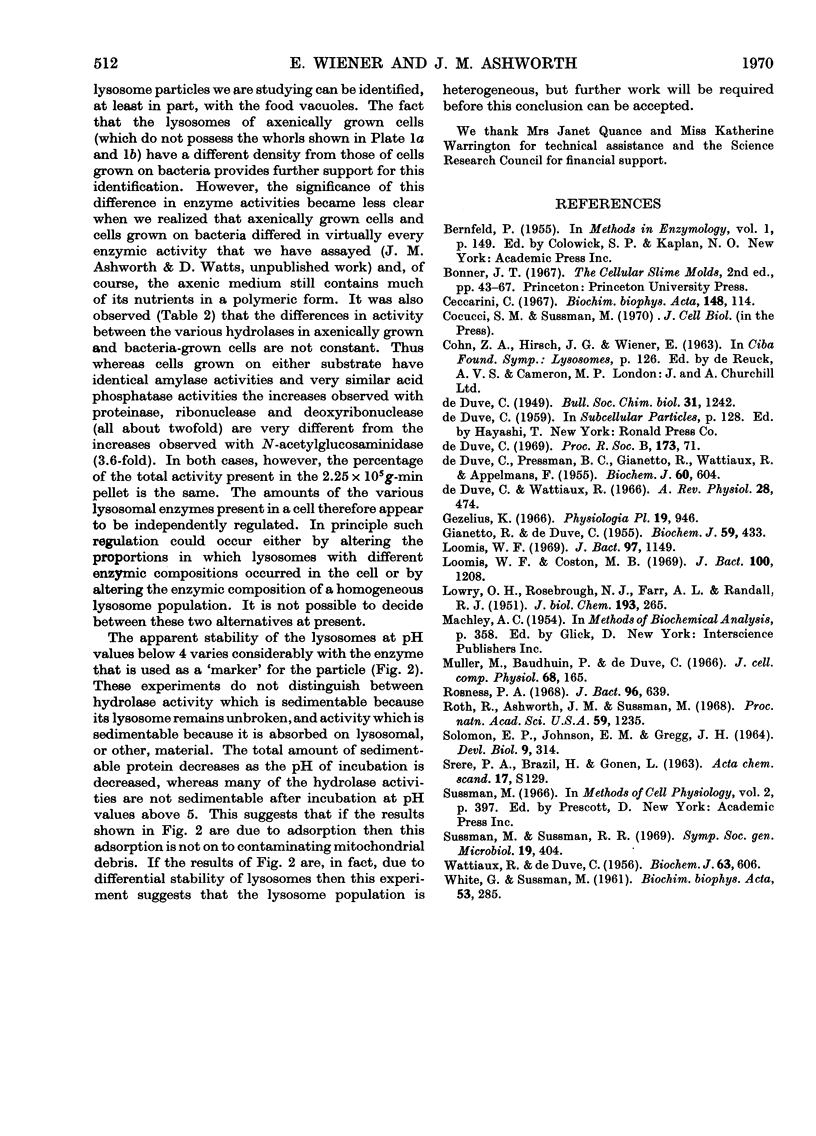
Images in this article
Selected References
These references are in PubMed. This may not be the complete list of references from this article.
- Ceccarini C. The biochemical relationship between trehalase and trehalose during growth and differentiation in the cellular slime mold, Dictyostelium discoideum. Biochim Biophys Acta. 1967 Oct 9;148(1):114–124. doi: 10.1016/0304-4165(67)90285-1. [DOI] [PubMed] [Google Scholar]
- Coston M. B., Loomis W. F., Jr Isozymes of beta-glucosidase in Dictyostelium discoideum. J Bacteriol. 1969 Dec;100(3):1208–1217. doi: 10.1128/jb.100.3.1208-1217.1969. [DOI] [PMC free article] [PubMed] [Google Scholar]
- DE DUVE C., PRESSMAN B. C., GIANETTO R., WATTIAUX R., APPELMANS F. Tissue fractionation studies. 6. Intracellular distribution patterns of enzymes in rat-liver tissue. Biochem J. 1955 Aug;60(4):604–617. doi: 10.1042/bj0600604. [DOI] [PMC free article] [PubMed] [Google Scholar]
- DE DUVE C., WATTIAUX R. Tissue fractionation studies. VII. Release of bound hydrolases by means of triton X-100. Biochem J. 1956 Aug;63(4):606–608. doi: 10.1042/bj0630606. [DOI] [PMC free article] [PubMed] [Google Scholar]
- GIANETTO R., DE DUVE C. Tissue fractionation studies. 4. Comparative study of the binding of acid phosphatase, beta-glucuronidase and cathepsin by rat-liver particles. Biochem J. 1955 Mar;59(3):433–438. doi: 10.1042/bj0590433. [DOI] [PMC free article] [PubMed] [Google Scholar]
- LOWRY O. H., ROSEBROUGH N. J., FARR A. L., RANDALL R. J. Protein measurement with the Folin phenol reagent. J Biol Chem. 1951 Nov;193(1):265–275. [PubMed] [Google Scholar]
- Loomis W. F., Jr Acetylglucosaminidase, an early enzyme in the development of Dictyostelium discoideum. J Bacteriol. 1969 Mar;97(3):1149–1154. doi: 10.1128/jb.97.3.1149-1154.1969. [DOI] [PMC free article] [PubMed] [Google Scholar]
- Müller M., Baudhuin P., De Duve C. Lysosomes in Tetrahymena pyriformis. I. Some properties and lysosomal localization of acid hydrolases. J Cell Physiol. 1966 Oct;68(2):165–175. doi: 10.1002/jcp.1040680211. [DOI] [PubMed] [Google Scholar]
- Rosness A. Cellulolytic enzymes during morphogenesis in Dictyostelium discoideum. J Bacteriol. 1968 Sep;96(3):639–645. doi: 10.1128/jb.96.3.639-645.1968. [DOI] [PMC free article] [PubMed] [Google Scholar]
- Roth R., Ashworth J. M., Sussman M. Periods of genetic transcription required for the synthesis of three enzymes during cellular slime mold development. Proc Natl Acad Sci U S A. 1968 Apr;59(4):1235–1242. doi: 10.1073/pnas.59.4.1235. [DOI] [PMC free article] [PubMed] [Google Scholar]
- SOLOMON E. P., JOHNSON E. M., GREGG J. H. MULTIPLE FORMS OF ENZYMES IN A CELLULAR SLIME MOLD DURING MORPHOGENESIS. Dev Biol. 1964 Jun;9:314–326. doi: 10.1016/0012-1606(64)90028-4. [DOI] [PubMed] [Google Scholar]
- WHITE G. J., SUSSMAN M. Metabolism of major cell components during slime mold morphogenesis. Biochim Biophys Acta. 1961 Oct 28;53:285–293. doi: 10.1016/0006-3002(61)90441-3. [DOI] [PubMed] [Google Scholar]



